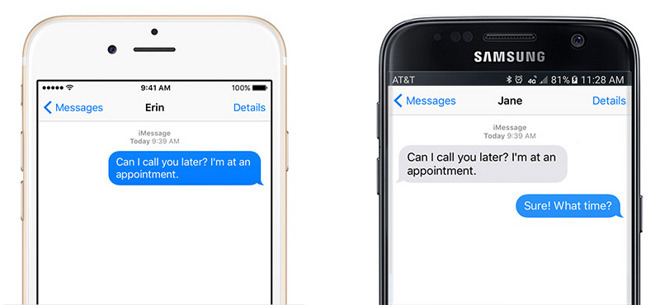In an editorial bemoaning the lack of interoperability between Apple's iMessage and common SMS texting systems, former head of iOS development Scott Forstall reveals the company once tried to push wireless carriers toward its version of messaging.
According to Forstall, Apple created iMessage because it wanted "messaging to feel more like a conversation," reports The Wall Street Journal.
Apple included a number of enhancements to traditional text messaging in its first-party solution. Read receipts, dynamic typing indicators, rich photo and video support and other niceties came standard. More recently, the company built on the foundation by adding a dedicated App Store and, importantly, peer-to-peer Apple Pay payments.
The problem, as explained by reporter Joanna Stern, is that iMessage's major benefits are incompatible with traditional SMS and MMS technology in use by Android and other smartphone operating systems. Further, attempting to switch away from Apple's walled garden can cause a host of problems, from lost messages to broken group text threads.
Users of Apple's iOS products are likely familiar with SMS conversations — the "green bubble" text threads in Messages — and their inherent limitations.
Since its inception, iMessage has been viewed as yet another value-added feature designed to keep iOS users within the confines of Apple's walled garden, and to an extent that appears to be true. However, in researching today's editorial, Stern discovered Apple once attempted to push the wider industry toward a texting standard that shared features with its in-house platform.
"We approached the carriers to pursue adding features to the existing texting systems and removing the additional customer costs," Forstall said. "For various reasons, from the difficulty of extending the existing standards, to challenges with interoperability between texting systems and carriers, to the desire of carriers to protect a significant revenue stream, these explorations didn't pan out."
It is unclear when Apple proposed the enhancements, but carriers were reportedly surprised to see iMessage introduced as part of iOS 5 in 2011.
Indeed, telcos have been using the same SMS and MMS services for years. As Stern notes, hardware manufacturers are moving toward Rich Communications Services, or RCS, in an attempt to cross-platform features like read receipts and typing indicators, but the technology is not end-to-end encrypted. As such, Apple is unlikely to jump on board, which means iOS users will continue to see green bubbles when they chat with friends using non-iOS or Mac devices.
Though a number of alternative cross-platform, internet-based messaging options exist — Facebook's WhatsApp or WeChat — Stern says "the dream" is an Android version of iMessage. Apple was on multiple occasions rumored to release such a solution, bridging the gap between the world's mobile OS duopoly. The company supposedly went so far as to create mockups of a potential Android iteration using Google's Material Design.
For now, however, Apple seems content to build out its own platform and let others fend for themselves.
 Mikey Campbell
Mikey Campbell







-m.jpg)






 Charles Martin
Charles Martin

 Malcolm Owen
Malcolm Owen
 William Gallagher
William Gallagher

 Christine McKee
Christine McKee
 Wesley Hilliard
Wesley Hilliard









17 Comments
If Apple bought a controlling stake in a cell service company, they could always influence those decisions which would best enhance their services. Soooo........
I have a question for any Android fans on messaging. I have a friend using Android. When he sends an MMS (not SMS) using the default Samsung messaging app it will come into my iPhone in a variety of ways:
1) Into iMessage (as an MMS) with <phonenumber>@random.com where the random is different every time but is generally some weird carrier name not even available in the area.
2) Into email using my iCloud (@me) account from a <random>.<random>.com address. The "from" is just a 10 digit string of numbers and is different every time.
3) Into email using my iCloud (@me) account from a <phonenumber>.<random>.com address. The "from" is just a 10 digit string of numbers and is different every time.
4) Just like a normal MMS text message.
Does anyone know why his phone is doing this? It drives me nuts.
SMS always works just fine.
Given they are still partners at some level, you would have thought Google & Apple would have found a way to interconnect messages/FaceTime & Allo/Duo.
Surely Google’s new-found love of vertical integration would fuel a meeting of minds, albeit design genius with evil intent.